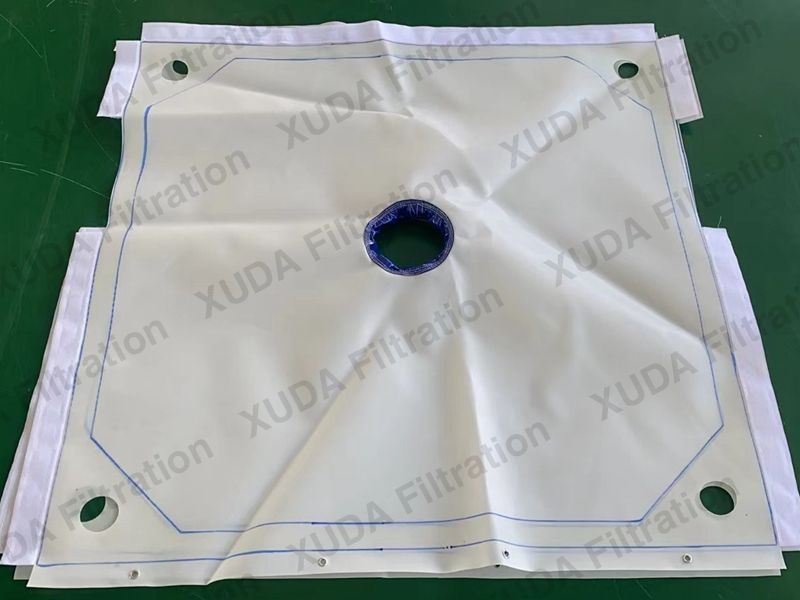Top 7 Reasons to Choose Multifilament Filter Cloth for Superior Filtration
May. 21, 2025
In industries where filtration efficiency makes or breaks the operation—whether it's in wastewater treatment, mining, food processing, or chemical production—the type of filter cloth you use plays a massive role. One of the top performers in this field is multifilament filter cloth.
So, what makes this material stand out in a market full of options? In this article, we’ll break down 7 compelling reasons why multifilament filter cloth is an excellent choice for superior filtration. Whether you're an engineer, procurement officer, or plant manager, understanding these advantages can help you make more informed and cost-effective decisions.
1. Exceptional Filtration Efficiency
When it comes to capturing fine particles, multifilament filter cloth performs exceptionally well. Its structure consists of numerous tiny filaments twisted together into a yarn, offering a tight and consistent weave. This uniformity results in:
High particle retention
Improved clarity of filtrate
Minimal particle bypass
Because the threads are so fine, smaller particulates get trapped efficiently, making it ideal for applications where clarity and precision are key—such as in pharmaceutical or food-grade filtration.
2. Durability and Long Service Life
Unlike monofilament fabrics that consist of single, thicker fibers, multifilament cloths are more flexible and less prone to breakage under stress. The multiple filaments in each yarn help distribute the stress load across a wider area, meaning:
Reduced risk of tearing
Better resistance to wear and abrasion
Longer operational cycles between replacements
This translates to cost savings over time, as you won’t need to replace the cloth as frequently—ideal for high-load industrial environments where downtime is costly.
3. Superior Cake Release Properties
One of the critical performance metrics in any filtration system is how easily the filter cake (the collected solids) can be removed from the cloth. Thanks to its smooth surface and flexible structure, multifilament filter cloth allows for efficient cake discharge.
This is especially important in:
Filter press operations
Vacuum filters
Centrifuges
With easier cake removal, you can maintain consistent throughput and reduce the need for manual cleaning, enhancing overall system efficiency.
4. Chemical Resistance and Versatility
In industries dealing with aggressive chemicals or extreme pH levels, filter media must be up to the task. Multifilament filter cloths are often made from synthetic materials like:
Polyester (PET)
Polypropylene (PP)
Polyamide (Nylon)
These materials offer outstanding resistance to a broad spectrum of chemicals, including:
Acids
Alkalis
Solvents
Because of this, multifilament cloth can be customized to suit various chemical environments, making it a versatile choice across multiple industries.
5. Excellent Moisture and Thermal Stability
Multifilament filter cloths can withstand moisture-rich environments without degrading. Furthermore, synthetic versions—especially polyester-based fabrics—can resist temperatures up to 150°C (302°F), depending on the design and coating.
Key advantages include:
Stable performance in hot filtration processes
No degradation due to moisture absorption
Minimal fabric deformation over time
This makes them ideal for slurry filtration, chemical processing, and hot liquid-solid separation.
6. Customizable Weaves and Configurations
Another huge advantage of multifilament filter cloth is the ability to tailor the fabric design to specific operational requirements. You can customize:
Thread count and density
Air permeability
Pore size
Surface finish (calendered, singed, or heat-set)
This level of customization allows you to optimize the cloth for:
Specific particle sizes
Required flow rates
Targeted filtration goals
So whether you're filtering fine chemical sludge or coarse mining tailings, you can find (or design) a multifilament cloth that fits the bill.
7. Environmentally Friendly and Recyclable
In today's sustainability-driven industries, the environmental impact of filtration materials is under the spotlight. Fortunately, multifilament filter cloths are recyclable and can be manufactured from eco-conscious materials like recycled polyester.
Benefits include:
Lower environmental footprint
Reduced waste in landfill
Support for green certifications and ESG goals
Additionally, the longer lifespan and higher durability of multifilament fabrics reduce the frequency of replacements, further minimizing waste and lowering operational carbon footprint.
Bonus: Easier Maintenance and Cleaning
The smooth surface and synthetic nature of multifilament filter cloth make it easier to clean—whether manually or through automatic cleaning systems. This helps:
Reduce labor costs
Improve hygiene in food or pharma environments
Prolong fabric life
Less frequent cleaning cycles and shorter wash durations translate directly into reduced downtime and higher productivity.
Common Applications of Multifilament Filter Cloth
To appreciate the real-world value of this material, let’s take a quick look at where it’s being used:
| Industry | Application |
|---|---|
| Mining | Tailings, dewatering, mineral recovery |
| Food & Beverage | Sugar processing, wine filtration |
| Pharmaceutical | High-purity liquid filtration |
| Chemical Manufacturing | Acid and alkali filtration |
| Wastewater Treatment | Sludge dewatering |
| Textile & Dyeing | Pigment recovery, wastewater cleanup |
| Paper & Pulp | Fiber recovery |
These industries demand high standards of reliability and efficiency—exactly what filter cloth delivers.
Conclusion
Choosing the right filtration media is more than just a technical decision—it's a strategic one. Multifilament filter cloth offers a unique combination of precision, strength, chemical resistance, and sustainability that few other materials can match.
From superior particle retention to long-term durability and eco-friendliness, the benefits are both practical and cost-effective. If your operations demand consistent performance, reduced downtime, and cleaner results, it’s time to consider multifilament filter cloth as your go-to solution.
82
0
0
All Comments (0)
Previous: None
Next: None
If you are interested in sending in a Guest Blogger Submission,welcome to write for us!



Comments